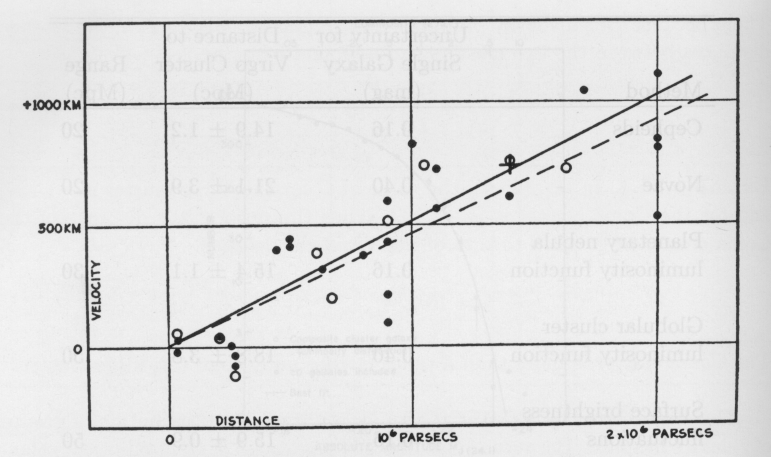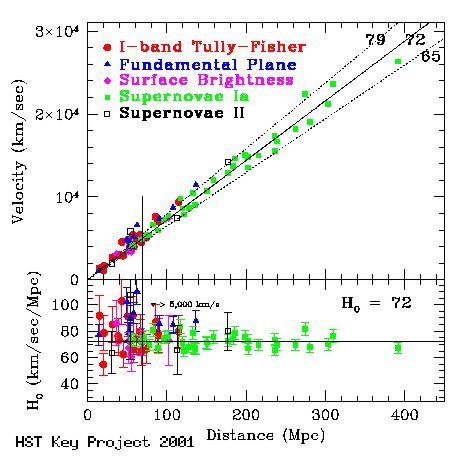
(from Hubble 1936)

(from Hubble 1936)
In other words, the
Universe is expanding! For now, ignore the stupefying
physical meaning behind this, and realize that Hubble's Law can be
written
v=H0d (for v<<c)
In other words, if we can determine H0, then all we need to do is measure the radial velocity of a galaxy and we know its distance. How much simpler can you get?
Problem #1: what else (besides expansion) could affect the velocity of galaxies?
Problem #1a: For a given galaxy, how much of its velocity is really due to expansion?Problem #2: we need to determine H0 (in km/s/Mpc).
Problem #1b: We live near a big galaxy cluster (Virgo).
How do we do this? We need to know the absolute distances of a large sample of galaxies at large distances. This is hard!But if we can calibrate any of the previous techniques locally, and then use them to get distances to distant galaxies, it can be done.
A modern Hubble plot (from the HST Key Project team).
Best current estimate comes from using the Hubble Space Telescope to calibrate a whole set of distance indicators in more distant galaxies; these studies get H0=72 +/- few km/s/Mpc.
